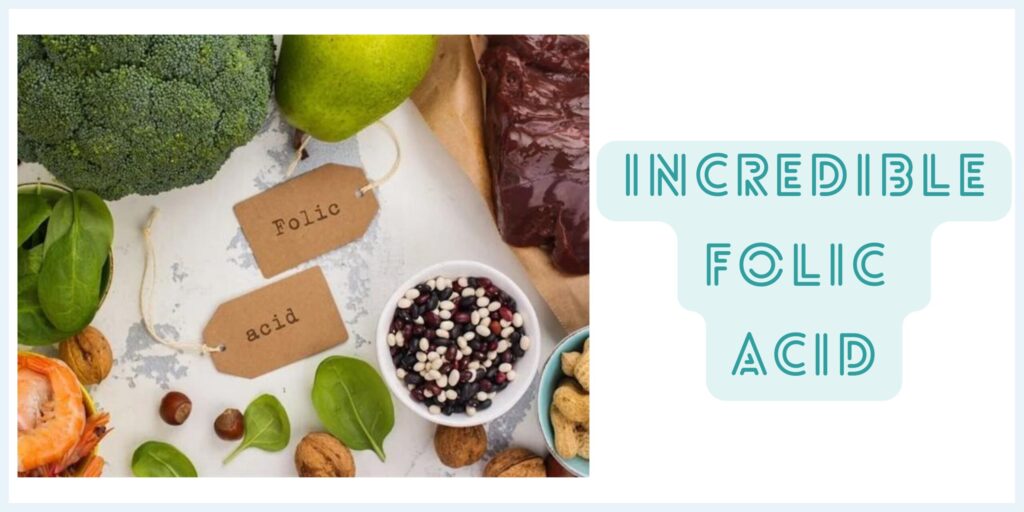Uses of folic acid
The uses of folic acid are clarified meticulously in this article. Folic acid is a B vitamin that aids in the production of new, healthy cells, and it is essential for everyone, especially for women who might get pregnant. Folic acid is often present in foods including spinach, brussels sprouts, broccoli, beets, lentils, oranges, peas, asparagus, and dry beans; it may also be found in products made with whole wheat. Folic acid is both a dietary supplement and a drug that is being employed to treat anaemia, which is a shortage of red blood cells induced by folic acid insufficiency. The folic acid shortfall is the most common reason for several forms of anaemia. It is possible for a woman to avoid severe birth abnormalities of her baby’s brain or spine by taking adequate amounts of folic acid before and throughout her pregnancy. You can acquire folic acid through the foods you consume, but you can also receive it as a dietary supplement if you don’t get enough of it. An increased folic acid consumption might result in high volumes of unmetabolised folic acid in the blood.
Folic acid dosage
Folic acid may assist in the prevention of some birth abnormalities, and it is recommended that all women of childbearing age take in a daily dose of 400 micrograms of folic acid. The uses of folic acid entails assisting your body in producing and maintaining new cells. It is possible for significant birth malformations to arise in a baby’s brain or spine as early as three to four weeks after conception, which is before the majority of women are aware that they are pregnant. A larger dosage of folic acid than 400 mcg per day is not always more effective in preventing neural tube abnormalities, except if a doctor prescribes consuming more owing to additional health issues. Before becoming pregnant, women who have previously suffered a pregnancy impacted by neural tube damage must discuss this with their medical professional. The CDC advises these women to take 4,000 micrograms of folic acid per day for one month before conception and the first three months of pregnancy. The Centers for Disease Control and Prevention (CDC), which is an organisation with its headquarters in the United States, is one of the primary operational components that are a part of the Department of Health and Human Services.
Folate and folic acid
Folate and folic acid are often confused with each another, despite the fact that they refer to two distinct substances. Folate is a generic name that may refer to a wide range of diverse forms of vitamin B9. If you want to maintain a healthy lifestyle, you need to give some thought to the food regimen you follow. The uses of folic acid comprises aiding in preventing alterations to DNA that might contribute to cancer. The process of adding vitamins, minerals, or both to foods is referred to as food fortification; folic acid is a particular kind of folate that does not often exist naturally. Some varieties of rice, pasta, bread, and cereals are considered “enriched” because they have more folic acid added to them during the manufacturing process. Folic acid is an excellent substance for food fortification because it is more stable than other forms of naturally occurring folate found in food; other forms are susceptible to decomposition when exposed to heat and light. Because many fortified foods, like bread and pasta, are cooked during production, folic acid is perfect for this process.
How much folic acid should I take to avoid neural tube defects?
Folic acid is among the medicines that may be used with others in order to treat pernicious anaemia; it is one of the uses of folic acid. Women may obtain folic acid in several different ways, including the consumption of foods rich in folate as part of a balanced diet; Consuming a vitamin supplement that is comprised of folic acid: The majority of vitamin supplements that are available for purchase in the United States include the necessary daily quantity of folic acid (400 mcg) for the treatment and prevention of neural tube abnormalities in females. Vitamins are stocked in the food sections of most grocery shops, pharmacies, and budget stores. Consuming foods that have been fortified: Some types of bread, morning cereal, and corn masa flour contain folic acid in varying amounts—obtaining folic acid by combining two methods, namely, ingesting a vitamin that contains folic acid and consuming food that has been fortified. If you are taking folic acid for any purpose other than preventing neural tube defects, you should discuss this with your healthcare professional.



